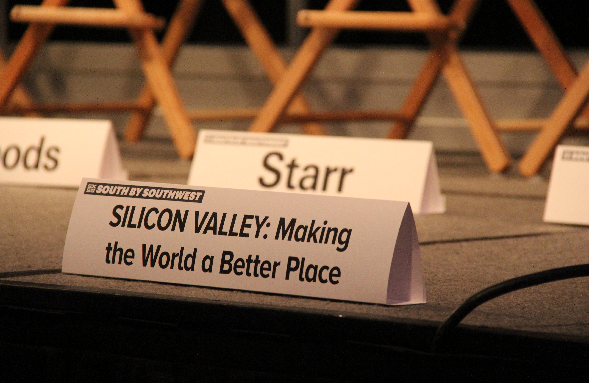
To disrupt is to make significant change. This is where technology reigns and why facilitating disruption should be public policy and priority.
Innovation is not enough
Innovation is great, and it brings to people and industry many useful advancements. But innovating is a poor second cousin to disruption. You can innovate better ways to flip hamburgers, but this is not going to materially change the state of humanity. Innovations are, by definition, something “new” but not necessarily something good, better or revolutionary.
Disruption is “a radical change in an industry, business strategy, etc., especially involving the introduction of a new product or service that creates a new market.” It also denotes “a disrupted condition,” meaning that the old order is no longer the way things will be done.
Here in Silicon Valley, we thrive on disruption. Sure, we still invest in innovation, but we are always on the hunt for something that literally changes the course of humanity. Everyone knew the Internet would someday hold all the world’s knowledge, but Google disrupted by making that knowledge findable. Silicon Valley started life when Shockley and Fairchild came to town with transistors that put a radio in every pocket. These later became integrated chips (ICs) that led to computers, mainframes, and smartphones, and facilitated the Internet through which you read these words.
The goal then is to use technology to disrupt everything, from information management to how your artificial heart will anticipate changing its pace so you can still run a marathon.
Ingredients for disruption
Disruption comes from the intersection of knowledge and exploration.
Picture a box. Most people spend their lives within a box of knowledge. A smaller number of people open their own boxes to explore the outside edges – to see where boundaries lie. An even smaller set look over to other boxes of knowledge, and see how edges of various boxes align. The last group are the “out-of-the-box thinkers” and Silicon Valley is littered with them. These are also the people who disrupt. Looking at the outside of a box of knowledge, to see where it might be expanded, can lead to innovation. But disruption comes from connecting the boxes.
Humans are by nature curious animals, but this isn’t enough to encourage disruption. To create out-of-the-box thinkers requires that we both set the stage for their disruptive abilities and clear away obstacles. There are public policy issues that polish both sides of this coin.
Public policy and disruption
The one thing Silicon Valley has proven is that we can change the world, and do so quite regularly. If the entire United States wants to join our disruption party, here is how government policy can help.
Regulation
High-tech industries are some of the least regulated, which gives us the greatest latitude for change. Given that we have lost an estimated $4T in economic vitality since 1980 due to regulations, getting rid of regulations that are inane or that exist to rig parts of the economy is a good start. Each industry should be deregulated enough to liberate disruptive innovation while ensuring public safety. No industry is immune to disruption, and lifting unnecessary burdens is key. “We can lick gravity,” rocket pioneer Wernher von Braun said, “But sometimes the paperwork is overwhelming.”
STEM priority
Nobody decries or shuns education in the arts. But disruption that materially changes the world and improves the human condition comes from the interrelated fields of science, technology, engineering and math (STEM). With the entire world wired, and with most future challenges being solvable through applied science, successful countries will make STEM education a priority. This includes a high degree of rigor in K–12 and STEM-preferential funding in universities.
Other education
Part of the job of creating out-of-the-box thinkers is to teach them to think and give them many unrelated things to think about. Robert Moog, the disruptive engineer of electronic music, was educated in hard sciences and influenced by people who composed music. He had to think through where the edges of those boxes aligned. Schools, starting with K–12, need to teach critical thinking skills so students know how to research, and teach arts so they can think in the abstract (music, fine arts, etc. have many aspects that avoid quantification). This combination leads to out-of-the-box thinking, which is part of disruption. Modern desktop computing might not exist if Steve Jobs had not studied calligraphy.
Invest in science
Scientific discovery leads to technical solutions. Studies in photonics, the properties and transmission of light, led to modern fiber optics for high-speed Internet service, which is rolling out to residences at a painfully slow pace. But raw scientific research has a hit-or-miss funding scheme and some perverse modes for profiting. Government can fund raw scientific research, and should do so. They can also open all tax-financed scientific discoveries and immediately producible technologies to the American public domain, which would launch wave after wave of disruption and GDP growth.
Disrupt or die
We are not alone in the disruption world, and are in effect financing potential disruptors elsewhere. American industries have set up R&D centers in China and India. Blessed with viable education systems and the hunger to advance, there will be many out-of-the-box thinkers in these regions.
For America to stay ahead of the game, we have to facilitate success. Set the foundation (through education), seed advancement (via scientific discovery), and clear the brush (deregulation). All of this exists in Silicon Valley. The time is now to make it a national objective.
This article originally appeared in Forbes
